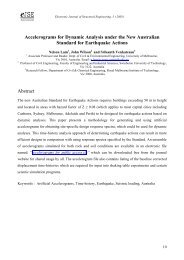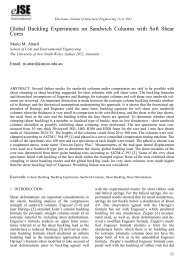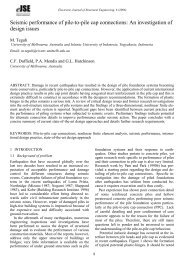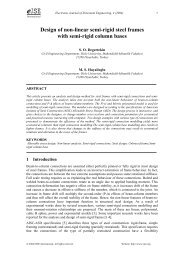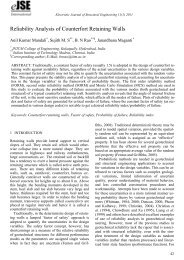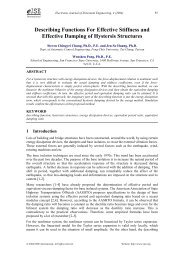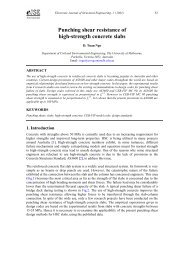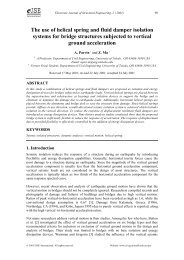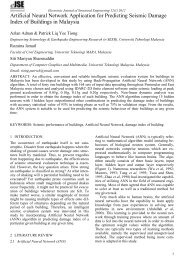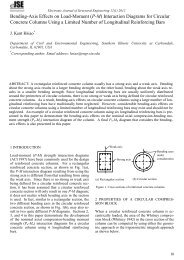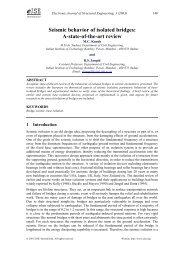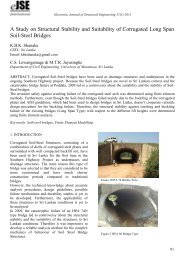You also want an ePaper? Increase the reach of your titles
YUMPU automatically turns print PDFs into web optimized ePapers that Google loves.
Step 4: Defining Static Pushover Cases<br />
For this tutorial example we will define six static pushover cases. The first will apply the gravity<br />
load to the structure, and the other five will apply different distributions of lateral load to the<br />
structure.<br />
1. From the Define menu choose Static Pushover Cases…. This will display the Define Static<br />
Pushover Cases dialog box.<br />
2. Click the Add New Pushover button to display the Static Pushover Case Data dialog box.<br />
3. In this dialog box:<br />
• Type GRAV in the Pushover Case Name edit box.<br />
• In the Options Area select the Push To Load Level Defined By Pattern option button.<br />
Note: Typically the Push To Load Level Defined By Pattern option is used to apply<br />
gravity load, and the Push To Displacement Of option is used to apply lateral<br />
pushes.<br />
• In the Load Pattern do the following:<br />
ä Select DL from the Load drop-down box.<br />
ä Type 1 in the Scale Factor edit box.<br />
ä Click the Add button.<br />
ä Select LL from the Load drop-down box.<br />
ä Type 0.25 in the Scale Factor edit box.<br />
ä Click the Add button.<br />
• Accept all of the other default values. Note that the default Control Joint, joint 19, occurs<br />
at the roof. The dialog box appears as shown in Figure D-3.<br />
• Click the OK button to complete this pushover case definition.<br />
Note: There are five control parameters in the right-hand side of the Options area.<br />
These parameters are used to control the pushover analysis. For most analyses the<br />
default values are sufficient.<br />
The Minimum Saved Steps and Maximum Saved Steps provide control over the<br />
number of points actually saved in the pushover analysis. The default values are<br />
<strong>SAP2000</strong> <strong>Web</strong> <strong>Tutorial</strong> 1 98



